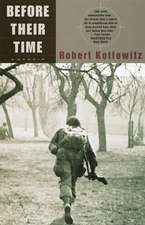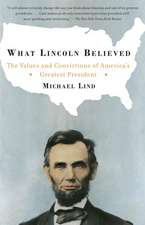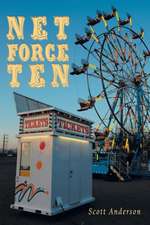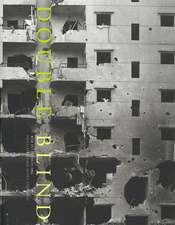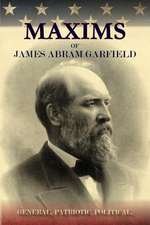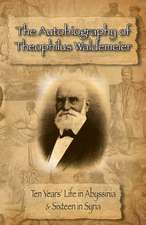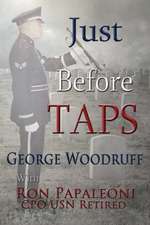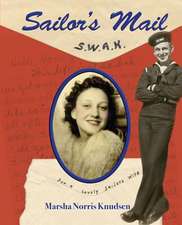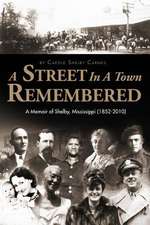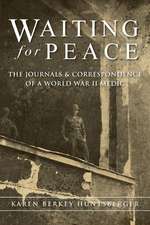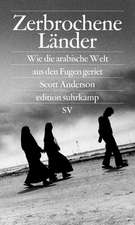The Man Who Tried to Save the World: The Dangerous Life and Mysterious Disappearance of Fred Cuny
Autor Scott Andersonen Limba Engleză Paperback – 30 apr 2000
Who was Cuny really working for? Was he a CIA spy? Who killed him, and why? In search of the answers, Scott Anderson traveled to Chechnya on a hazardous journey that started as as a magazine assignment and ended as a personal mission. The result is a galvanizing adventure story, a chilling picture of "the new world order," and a tour de force of literary journalism.
Preț: 118.10 lei
Nou
Puncte Express: 177
Preț estimativ în valută:
22.60€ • 23.46$ • 18.85£
22.60€ • 23.46$ • 18.85£
Carte disponibilă
Livrare economică 01-15 martie
Preluare comenzi: 021 569.72.76
Specificații
ISBN-13: 9780385486668
ISBN-10: 0385486669
Pagini: 400
Ilustrații: 8 PAGES OF B&W PHOTOGRAPHS
Dimensiuni: 133 x 205 x 22 mm
Greutate: 0.37 kg
Editura: Anchor Books
ISBN-10: 0385486669
Pagini: 400
Ilustrații: 8 PAGES OF B&W PHOTOGRAPHS
Dimensiuni: 133 x 205 x 22 mm
Greutate: 0.37 kg
Editura: Anchor Books
Notă biografică
SCOTT ANDERSON is a renowned war reporter whose work has appeared in The New York Times Magazine, Harper's, and other national publications. He is the author of the novels Triage and The 4 O'Clock Murders, and coauthor of War Zones with his brother, Jon Lee Anderson. He lives in Brooklyn, New York.
Extras
You have entered the wilderness of trees and mirrors. This is a story with no obvious answers because that's how it was set up, the way it's supposed to be. --Former U.S. intelligence officer on the search for Fred Cuny
Shortly after eleven o'clock on the morning of March 31, 1995, five people emerged from a building at the south end of the main square of Sleptsovskaya, a small town in the northern Caucasus republic of Ingushetia. Crossing to the tree-lined curb, they climbed aboard a battered gray ambulance and pulled away.
The two-story building they had just left housed a Russian government agency with a very long name: the Ministry of States of Emergency and Elimination of Consequences of Natural Disasters--or "Emergency Situations" for short. There had been a number of "emergency situations" in the Russian Federation since the collapse of the Soviet Union, but the most pressing one in Ingushetia that spring of 1995 was the war in neighboring Chechnya. At the end of March the conflict between the Russian army and Chechen separatists was only fourteen weeks old, but already tens of thousands were dead, whole towns and cities flattened, and the tide of battle had moved steadily westward to lap at the Ingushetia frontier. In Sleptsovskaya, a dusty, dull town less than a mile from the border, the fighting was now so close that on some nights its windows rattled from the concussion of Russian artillery, certain breezes carrying the sounds of combat so distinctly--the tap-tap-tap of machine-gun fire, even the soft, metallic clank produced by a tank moving over uneven ground--that it seemed the war had reached its own streets.
But it was at night that most of the killing in Chechnya took place,and when the Russian-built UAZ ambulance left the main square thatsunlit morning all was quiet, as if Sleptsovskaya was still what it hadalways been: a sleepy agricultural town set amidst a beautiful and fertilevalley, its bare trees and fields awaiting the first stirrings ofspring.
The five people in the UAZ ambulance were bound for Chechnya, apparently planning to conduct a "needs assessment" tour of the war zone. In addition to the local driver, the party consisted of two Russian Red Cross doctors, an interpreter, and the leader of the mission, a fifty-year-old Texan named Frederick C. Cuny.
An already imposing figure at six foot three, made more so by his trademark hand-stitched cowboy boots with their two-inch heels, Fred bore a strong resemblance to the late actor Slim Pickens, a comparison accentuated by his somewhat paunchy frame and a soft North Texas drawl. While not strikingly handsome by traditional measure, there was about him an extraordinary sense of self-assuredness, an air of quiet authority and determination that most people found deeply charismatic; women, in particular, seemed to find him quite entrancing. With his close-cropped graying hair, habitual lopsided grin, and vaguely martial bearing, he gave the impression of an aging, slightly quirky ex-military man who was not taking very good care of himself, and he looked rather out of place for the wilds of the North Caucasus. Then again, Fred Cuny looked out of place in most of the forsaken spots he usually found himself in.
As founder and president of the Intertect Relief and Reconstruction Corporation, Fred was one of the world's most accomplished disaster relief experts, both a pioneer and an iconoclast in the field of international humanitarian aid. Operating out of a threadbare office in Dallas, he and his Intertect consultants had spanned the globe over the past twenty-five years to battle the catastrophes wrought by both nature and man--earthquakes in Guatemala, cyclones in Madagascar, wars on four continents. A man of astounding energy and will, he had repeatedly achieved what others deemed impossible, before quickly moving on to the next impossible task. On the strength of such accomplishments, he had earned an assortment of grandiose nicknames: "the Lone Ranger of emergency assistance," "the Red Adair of humanitarian relief"--and one he was especially fond of, "the Master of Disaster."
Along the way, however, Fred had fueled a fair amount of both resentment and suspicion. In recent years, many of his colleagues in the disaster relief fraternity, a fraternity where at least the appearance of neutrality was carefully maintained, had grown alarmed by his outspoken partisanship in different war zones around the world, as well as by his unusually cozy relationship with the American military. By the mid-1990s an increasing number of those who encountered Fred Cuny in the field began to suspect he might actually be an American intelligence agent. It was speculation Fred did little to discourage.
He had first come to Chechnya seven weeks earlier, in February 1995, at the behest of billionaire financier and philanthropist George Soros. Arriving amid the Russian army's "pacification" of the capital of Grozny--a scorched-earth campaign that was steadily reducing the city to rubble and killing hundreds of civilians each day--Fred had spent a week shuttling across the battle lines, meeting with both senior Chechen rebel commanders and Russian generals in an attempt to arrange a cease-fire, one long enough to evacuate the estimated 30,000 civilians still trapped in the city. In the end, the Russian high command vetoed his plan, and the shelling had resumed.
Professionally, that first brief sojourn onto the battlefield had been a bitter experience for Fred. In typical fashion, he had come to Chechnya with a number of bold ideas to salvage the place, but with the Russian military tightening their hold on the breakaway republic and openly contemptuous of any effort to ease civilian suffering, the "Master of Disaster" had been able to accomplish little. After laying the groundwork for a tiny emergency medical team that would operate out of Ingushetia, Fred had left the region, his far more ambitious goals indefinitely postponed.
But that trip had affected him in another, more personal way. Even for an eyewitness to some thirty conflicts over the previous quarter century, Fred had never seen a war to match the brutality or terrifying unpredictability of Chechnya. To friends and coworkers back in the United States, he called it "the scariest place I have ever been."
That reaction, however, simply served as a goad to greater action. Throughout March, Fred had waged a dogged--and increasingly public--campaign in the United States excoriating the Russian military for its brutal tactics in Chechnya. He had met with senior State Department officials in Washington, and testified before a congressional subcommittee. In early April a long article he had written in the same vein would appear in the New York Review of Books.
So prominent had Fred become on the topic of Chechnya that many of his colleagues worried that it made him a marked man in the eyes of the Russian military--and a dead man should he ever return to the region. Now he was back, having flown into the Sleptsovskaya airport on the afternoon of March 29.
Shortly after nine o'clock on that last morning of Friday, March 31, Fred called his assistant at the Soros office in Moscow, Elisabeth Socolow. Toward the end of the conversation he mentioned he was going into Chechnya later that morning on a quick "needs assessment" tour, but would return to neutral Ingushetia by evening or the next day at the latest.
Wary of the Russian telephones, Elisabeth did not press him for details on the trip, but she detected something strange in Fred's voice; usually jocular and engaging, his tone that morning was flat, somber. "Is everything okay?" she finally asked.
There was a pause. "Just think about me," Fred said softly, then hung up.
Shortly after eleven o'clock on the morning of March 31, 1995, five people emerged from a building at the south end of the main square of Sleptsovskaya, a small town in the northern Caucasus republic of Ingushetia. Crossing to the tree-lined curb, they climbed aboard a battered gray ambulance and pulled away.
The two-story building they had just left housed a Russian government agency with a very long name: the Ministry of States of Emergency and Elimination of Consequences of Natural Disasters--or "Emergency Situations" for short. There had been a number of "emergency situations" in the Russian Federation since the collapse of the Soviet Union, but the most pressing one in Ingushetia that spring of 1995 was the war in neighboring Chechnya. At the end of March the conflict between the Russian army and Chechen separatists was only fourteen weeks old, but already tens of thousands were dead, whole towns and cities flattened, and the tide of battle had moved steadily westward to lap at the Ingushetia frontier. In Sleptsovskaya, a dusty, dull town less than a mile from the border, the fighting was now so close that on some nights its windows rattled from the concussion of Russian artillery, certain breezes carrying the sounds of combat so distinctly--the tap-tap-tap of machine-gun fire, even the soft, metallic clank produced by a tank moving over uneven ground--that it seemed the war had reached its own streets.
But it was at night that most of the killing in Chechnya took place,and when the Russian-built UAZ ambulance left the main square thatsunlit morning all was quiet, as if Sleptsovskaya was still what it hadalways been: a sleepy agricultural town set amidst a beautiful and fertilevalley, its bare trees and fields awaiting the first stirrings ofspring.
The five people in the UAZ ambulance were bound for Chechnya, apparently planning to conduct a "needs assessment" tour of the war zone. In addition to the local driver, the party consisted of two Russian Red Cross doctors, an interpreter, and the leader of the mission, a fifty-year-old Texan named Frederick C. Cuny.
An already imposing figure at six foot three, made more so by his trademark hand-stitched cowboy boots with their two-inch heels, Fred bore a strong resemblance to the late actor Slim Pickens, a comparison accentuated by his somewhat paunchy frame and a soft North Texas drawl. While not strikingly handsome by traditional measure, there was about him an extraordinary sense of self-assuredness, an air of quiet authority and determination that most people found deeply charismatic; women, in particular, seemed to find him quite entrancing. With his close-cropped graying hair, habitual lopsided grin, and vaguely martial bearing, he gave the impression of an aging, slightly quirky ex-military man who was not taking very good care of himself, and he looked rather out of place for the wilds of the North Caucasus. Then again, Fred Cuny looked out of place in most of the forsaken spots he usually found himself in.
As founder and president of the Intertect Relief and Reconstruction Corporation, Fred was one of the world's most accomplished disaster relief experts, both a pioneer and an iconoclast in the field of international humanitarian aid. Operating out of a threadbare office in Dallas, he and his Intertect consultants had spanned the globe over the past twenty-five years to battle the catastrophes wrought by both nature and man--earthquakes in Guatemala, cyclones in Madagascar, wars on four continents. A man of astounding energy and will, he had repeatedly achieved what others deemed impossible, before quickly moving on to the next impossible task. On the strength of such accomplishments, he had earned an assortment of grandiose nicknames: "the Lone Ranger of emergency assistance," "the Red Adair of humanitarian relief"--and one he was especially fond of, "the Master of Disaster."
Along the way, however, Fred had fueled a fair amount of both resentment and suspicion. In recent years, many of his colleagues in the disaster relief fraternity, a fraternity where at least the appearance of neutrality was carefully maintained, had grown alarmed by his outspoken partisanship in different war zones around the world, as well as by his unusually cozy relationship with the American military. By the mid-1990s an increasing number of those who encountered Fred Cuny in the field began to suspect he might actually be an American intelligence agent. It was speculation Fred did little to discourage.
He had first come to Chechnya seven weeks earlier, in February 1995, at the behest of billionaire financier and philanthropist George Soros. Arriving amid the Russian army's "pacification" of the capital of Grozny--a scorched-earth campaign that was steadily reducing the city to rubble and killing hundreds of civilians each day--Fred had spent a week shuttling across the battle lines, meeting with both senior Chechen rebel commanders and Russian generals in an attempt to arrange a cease-fire, one long enough to evacuate the estimated 30,000 civilians still trapped in the city. In the end, the Russian high command vetoed his plan, and the shelling had resumed.
Professionally, that first brief sojourn onto the battlefield had been a bitter experience for Fred. In typical fashion, he had come to Chechnya with a number of bold ideas to salvage the place, but with the Russian military tightening their hold on the breakaway republic and openly contemptuous of any effort to ease civilian suffering, the "Master of Disaster" had been able to accomplish little. After laying the groundwork for a tiny emergency medical team that would operate out of Ingushetia, Fred had left the region, his far more ambitious goals indefinitely postponed.
But that trip had affected him in another, more personal way. Even for an eyewitness to some thirty conflicts over the previous quarter century, Fred had never seen a war to match the brutality or terrifying unpredictability of Chechnya. To friends and coworkers back in the United States, he called it "the scariest place I have ever been."
That reaction, however, simply served as a goad to greater action. Throughout March, Fred had waged a dogged--and increasingly public--campaign in the United States excoriating the Russian military for its brutal tactics in Chechnya. He had met with senior State Department officials in Washington, and testified before a congressional subcommittee. In early April a long article he had written in the same vein would appear in the New York Review of Books.
So prominent had Fred become on the topic of Chechnya that many of his colleagues worried that it made him a marked man in the eyes of the Russian military--and a dead man should he ever return to the region. Now he was back, having flown into the Sleptsovskaya airport on the afternoon of March 29.
Shortly after nine o'clock on that last morning of Friday, March 31, Fred called his assistant at the Soros office in Moscow, Elisabeth Socolow. Toward the end of the conversation he mentioned he was going into Chechnya later that morning on a quick "needs assessment" tour, but would return to neutral Ingushetia by evening or the next day at the latest.
Wary of the Russian telephones, Elisabeth did not press him for details on the trip, but she detected something strange in Fred's voice; usually jocular and engaging, his tone that morning was flat, somber. "Is everything okay?" she finally asked.
There was a pause. "Just think about me," Fred said softly, then hung up.
Recenzii
"One of the most thrilling stories I have ever read...This is not just an adventure story, but a mystery of the first order." --Sebastian Junger, author of The Perfect Storm
"A mystery story, straight out of a plot from John LeCarré." --The New York Times Book Review
"Forget Mount Everest. Forget the perfect storm. For pure adrenaline, there's nothing like the war zone." --Time Out New York
"One of the most important books to be published since the fall of the Berlin Wall...A great, epic mystery of our day." --The New York Observer
"A mystery story, straight out of a plot from John LeCarré." --The New York Times Book Review
"Forget Mount Everest. Forget the perfect storm. For pure adrenaline, there's nothing like the war zone." --Time Out New York
"One of the most important books to be published since the fall of the Berlin Wall...A great, epic mystery of our day." --The New York Observer
Textul de pe ultima copertă
A swashbuckling Texan, a teller of tall tales, a ladies' man, and a renegade, Fred Cuny spent his life in countries rent by war, famine, and earthquake, saving many thousands of lives with his innovative and often controversial methods of relief work. Cuny earned the nickname "Master of Disaster" for his exploits in Kurdistan, Somalia, and Bosnia. But when he arrived in the rogue Russian republic of Chechnya in the spring of 1995, raring to go and eager to put his ample funds from George Soros to good use, he found himself in the midst of an unimaginably savage war of independence unlike any he had ever before encountered. Shortly thereafter, he vanished into the warrocked highlands never to be seen again.
Who was Cuny really working for? Was he a CIA spy? Who killed him, and why? Determined to answer these questions, veteran war reporter Scott Anderson headed to Chechnya on a hazardous journey that started as a magazine assignment and ended as a personal mission. At great risk to his own life, Anderson traveled through the region in search of solutions to the enigmas of Fred Cuny's life and death. The result is an extraordinary narrative of the chilling reality that is "the new world order", and a tour de force of literary journalism.
Descriere
Like a Graham Greene novel come to life, this biography tells the mesmerizing story of Fred Cuny, the "Master of Disaster"--a complicated man who disappeared in the scariest place on earth. of photos.


